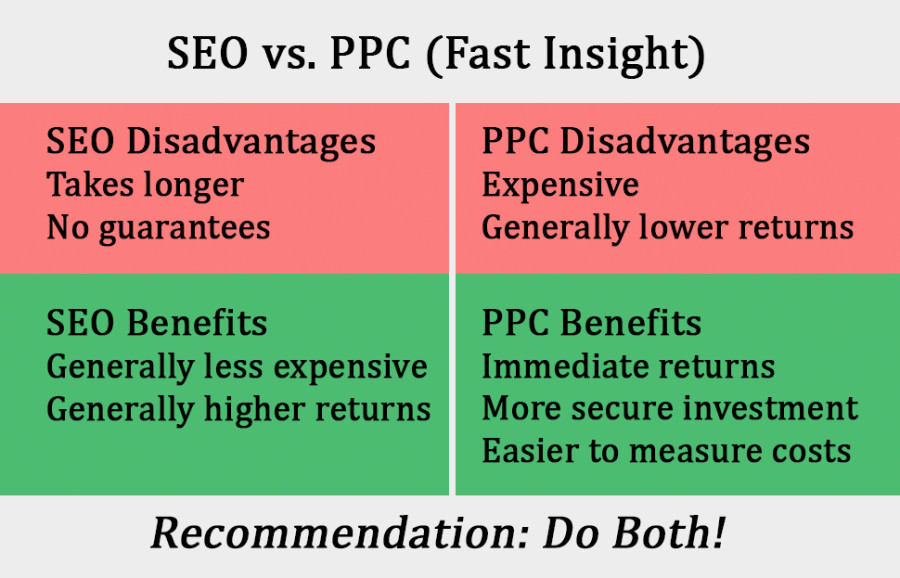
Google is more than just optimizing your title. Google will crawl your site to search for keywords. A basic SEO strategy is essential to make your content easier to index and show. Headings is another important aspect to optimize a blog for SEO. They allow readers to flow through the content, and search engines to understand the hierarchy of your reading. Be sure to use keywords and phrases when creating headings.
Meta description
Make sure you use an organic tone in your meta description when writing for SEO blogs. Answer a user's query with your meta description and showcase your high-quality content. Websites that look like spam are a negative impression on users. Writing for people, and not robots is the golden rule that will ensure you get more clicks. Here are some helpful tips for writing compelling meta descriptions.
Make it engaging: Include your main keyword in the meta description. Google does not consider your meta descriptions when indexing pages. However, it can be useful to draw attention to your page. The key is to keep your meta description between 140 and 160 characters long, and bold the most important words. A call to action should be included in the description, such as a link that takes you to your website. A meta description that is well written has a compelling call to actions.
The meta description is an opportunity to advertise your company. It is a great way to catch a user's attention and persuade them to click on the link. A quality meta description will increase website traffic and help you sell more. To encourage users to act, the meta description should end with a call-to-action. Your meta description can be rendered useless if your description is too lengthy or contains outdated information.
A meta description, in addition to making your site more readable and easier to read, can help increase click-through rates. If used properly, the meta description will increase your organic traffic and help you rank higher in search engines. The meta description is a minor role in Google's search engine results. A poorly-optimized meta description can result in your page ranking on page four rather than page one. A meta description is worth the effort even if you have a low click-through.
Keywords in title
Focused keywords must be used in the title of SEO blog posts to get the best results. Keywords in your title can help you to determine the direction of your content, and the likelihood it will reach your audience. The keywords in the title help search engines to summarize web pages based on the keywords contained within the content. These crawlers have advanced their technology to be able to judge the quality content on the Web. For better search rankings, make sure to include keywords in your titles.
Use phrases that are related to crossfit training and crossfit gyms if you own a gym. You should only use one keyword per piece. Too many keywords can make your article appear spammy to search engines. This will make your content less valuable for your readers. Articles that use long-tail keywords will rank better than those with shorter-tail keywords. Using these phrases is a great way to rank higher for a keyword in Google.
Your SEO blog title should be between 60 and 70 characters. The title tag should include the focus keyword as close to the start as possible. In addition, your chosen keyword should convey the benefit your post provides. Keyword stuffing and boilerplate titles are a bad practice, and Google warns against keyword stuffing. It is important to include a strong focus keyword in the title. Your audience should also be able to understand your content.
It is only half of your battle to include keywords in the title. Your title should not exceed 60 characters, or 575 pixels. Make sure the title is true to its promise and easy to read. SEO is all about planning. Your title should be as effective and informative as possible.
Internal links

There are many ways to improve the search engine optimization (SEO) of your website or blog. Internal links can be used to direct visitors to other pages on your site. These links can take you to different pages and content. This improves user experience and increases search performance. Keep in mind that internal links are different from backlinks. Readers will not find them on their terms. This can be achieved by using internal links at the right places.
SEO-friendly ways to retain and attract readers is by adding relevant internal links to your blog. Sites use different link styles, so it is important that you choose the correct words and anchor texts when creating a linking strategy. Internal links are a great way to grab your readers' attention and keep them on your website longer. You want to get the best out of your internal links. Make sure they point back at relevant content and offer a helpful solution.
If possible, the internal links should point directly to the main target keywords. While it is unlikely that Google will penalize your for using exact-match anchor texts, it is important to ensure the anchor text matches the content on the linked page. It shouldn't be keyword-stuffed. It is not a good idea to manipulate the anchor text to boost your search engine rankings. This tactic is against Google’s webmaster guidelines. This is a more efficient method than you might realize.
A way to optimize internal link optimization is to create content related to core services. For example, a landscaping company in Columbus generates 390 searches a month, far less than the search volume for the phrase "best smartphone." Your SEO efforts can be improved by strategically including links to internal pages in your blog posts. A good way to do this is to anticipate the questions that users will have when they browse your website.
Schema markup
To increase search engine rankings, you can include schema markup in blog posts. To create schema markup, visit Google Structured Data Markup Helper. You simply need to enter the URL for your website, select a category, then copy and paste the HTML code. This tool will open a new window and generate a tag manipulator. From there, you can click individual elements to tag them.
There are three types in schema markup: NewsArticle TechArticle & Microdata. Depending on the content of the post, each type may have a different set flags. NewsArticle is for articles that focus on current events. TechArticle could have flags to indicate the technical content within the article. An example is a HowTo article. These flags could indicate the technical level of its author, the software used and any dependencies.
Google has made it much easier to create schema. You can tag data to see similar content in search results. It is recommended that you use schema markup in your blog posts to build brand awareness. However, schema is best for small businesses with a local presence. Schema can also be used for events promotion. The benefits of using schema markup in your SEO blog post are numerous. Check out these links if you're not sure what to do.
Schema optimization can help you optimize your content. The markup helps search engines understand the different elements of a site. If you're blogging about food, for example, you can use schema markup to identify ingredients, instruction steps, nutritional values, and ketogenic diets. You can also use schema for your review blog. The basic principle behind search engine ranking is that the more relevant your content to a query by a user, the better you will be.
Copyright for the image

You should always check the permission of the original owner before you use any image in your SEO blog. Many PR agencies don't allow images to be shared from their websites. You may not have the right to use these images. For information on who the owner of the image is, contact them directly. Most times the owner is happy to give permission for you to use the photo. Here are some tips to help you comply with the law:
Google images should be avoided. Before you use an image on your blog, contact the original owner. Google allows you search for images but you must get permission before you can use them. If you have trouble finding the image you need, you can visit the page it is hosted on and ask for permission. This will help you ensure that you don't violate a copyright. Image copyrights can make the difference between a successful SEO blog and a website that gets banned from search engines.
Check the copyrights on any image you wish to use in your blog. It's illegal to use images from Google Images. You are discrediting the artist of the image and could face legal consequences if you steal images without permission. You can use public domain or fair-use photos if you have permission from the owner. If you still have any doubts, consult an intellectual property attorney.
Images used on SEO blogs need to have the same author/attribution. Creative or humorous photos are more likely to be used for SEO purposes, but you should always check the image's licence terms. Some images can be freely used, but some restrictions apply. Don't use images that you don't know the author of. You could be charged with copyright violation if the author is not royalty-free. You may also be sued, which could lead to a large amount of damages.
FAQ
Where Should My Website Be Located?
Your website must be at the top of search results. This means it should appear at the top of each search result. But, there may be hundreds upon pages in some searches. How does your website stack up against these other websites?
Do I need a digital marketing agency?
Once you realize your business needs extra support, it is probably too late for you to do everything by yourself. A digital marketing agency provides professional services for small businesses such as yours. They're experts at promoting your company online.
They can take care of everything from developing a strategy to implementing it, managing your social media accounts, and analytics.
How often should I update my site?
It is possible to improve your site's ranking by regularly updating it. You don't always need to update your site. You don't necessarily need to keep it updated if you have already created quality content.
What Content Strategy can I use to improve my ranking?
A content strategy is how you plan to create content over time. It includes topics, keywords, and other information about your company. Having this plan in place before you start writing will ensure that you don't produce too little or too much content.
Statistics
- Deleting those 10k pages is one of the main reasons that he improved his site's organic traffic by nearly 90%: (backlinko.com)
- A 62.60% organic traffic boost to that page: (backlinko.com)
- These guides are designed and coded 100% from scratch using WordPress. (backlinko.com)
- 64% of marketers actively create SEO campaigns because they help hit multiple key performance indicators (KPIs), including increasing traffic, helping your site rank for relevant keywords, improving your conversion rate, and much more. (semrush.com)
- And 90%+ of these backlinks cite a specific stat from my post: (backlinko.com)
External Links
How To
How to create a keyword strategic plan
Keyword research is an essential part of any SEO campaign. It helps identify what people are searching for on search engines such as Google and Bing. It allows you to build content around these keywords. This information will enable you to concentrate on creating content relevant to certain topics.
Keywords should be naturally placed within each page's content. Avoid putting keywords at the ends of pages or in odd places. Instead, use words that describe the topic in question and place them where they make sense. For example, you might use "dog grooming", instead of "dogs", or "grooming" for a topic like dog grooming. This makes it easier to read and understand.
Avoid using keywords too often. If you do, you need to make sure you are creating quality content relevant to the keywords. It is possible to spend too much time creating low-quality content that doesn't attract enough visitors. It is better to keep backlinks as low as possible. Backlinks are still valuable and can be used in a proper manner. Links can improve your website's authority and rank.
It's especially useful to link to other websites that cover similar topics. A product review blog that links to other products will help you rank higher in search engines.
This will increase your organic traffic through searches related to your niche. Join forums to maximize your exposure. You will likely be mentioned in return by the members of these forums.